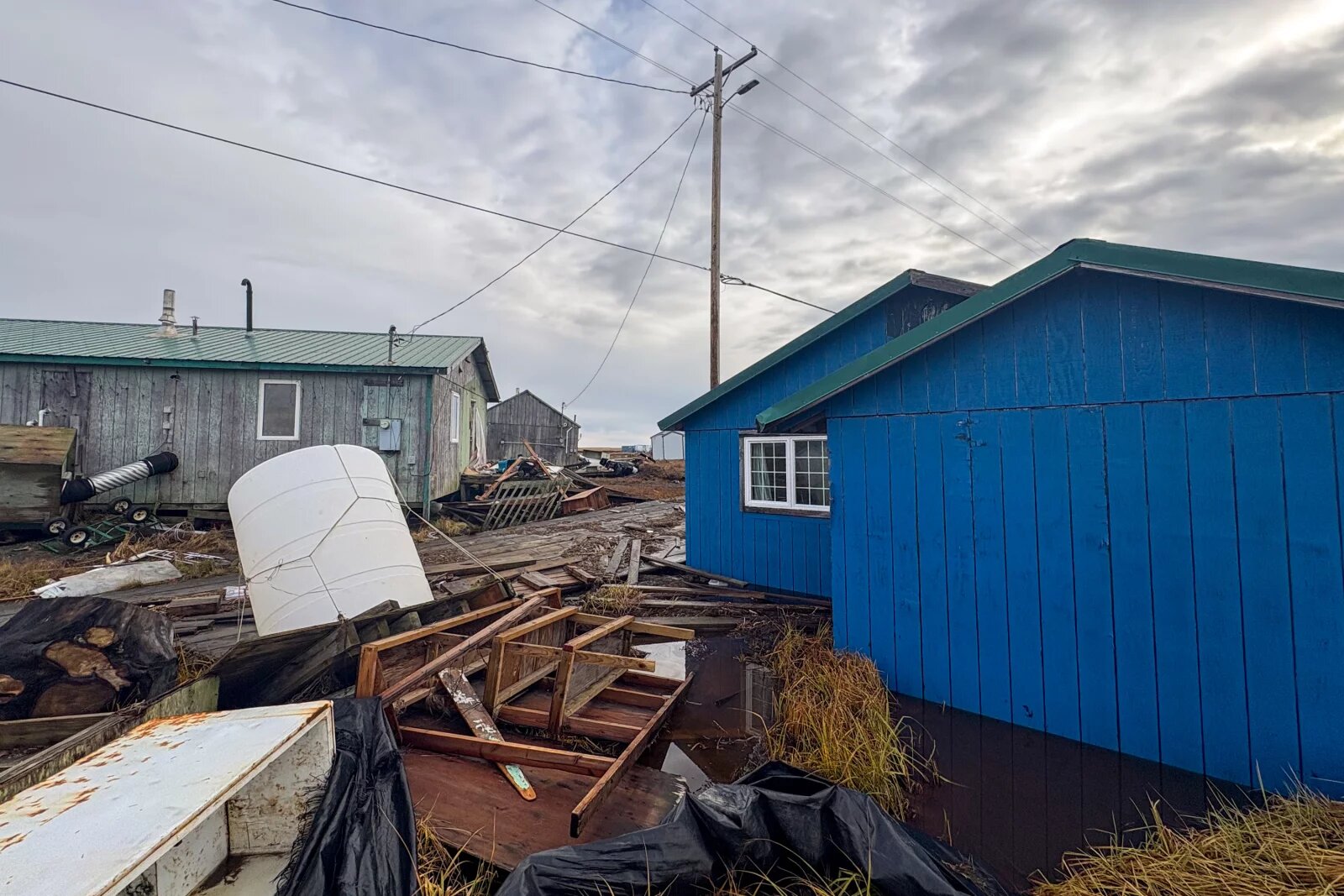
Nat Herz/KYUK
In the late night hours of Oct. 11, the remnant of Typhoon Halong slammed Alaska’s southwest coast, bringing hurricane-force winds and record flooding to numerous Alaska Native villages on the coast.
Evacuees and rescuers describe massive destruction: utility poles snapped in half, boardwalks — the roads and sidewalks in many tundra villages — uprooted, houses floated off their foundations, some with families still inside.
According to the state, more than a thousand people are displaced – some have no home to return to. One woman was found dead, and two of her family members remain missing. The state of Alaska’s Emergency Operations Center is in its highest-possible level of emergency response. Alaska Gov. Mike Dunleavy has called for a federal disaster declaration for the region.
Where is most affected?
The remnant of Typhoon Halong had sweeping impacts across the Yukon-Kuskokwim Delta — an area in Western Alaska hundreds of miles from the U.S. road system and about the size of Oregon, with dozens of small villages scattered throughout.
The coastal villages of Kipnuk and Kwigillingok took the brunt of the storm, and are being almost entirely evacuated, per the State Emergency Operations Center.
In addition, regional health officials have listed more than a dozen villages where substantial damage has been reported, and the state says that nearly 50 have reported some impacts. Damages are still being assessed and it’s not clear yet how many people will be permanently displaced.
Evacuations slowed and complicated by remoteness
Initially, many of the displaced sheltered in schools throughout the region. But with heating, fuel, water, and sewer systems strained — local officials said it wasn’t safe for people to stay.
Emergency responders started to evacuate people to Bethel, the 6,500-person hub community of the region, which saw comparatively little damage from the storm. But the emergency shelter there reached capacity quickly. Within two days, displaced residents were being flown to Anchorage, 400 air miles away.
The evacuation process was significantly slowed by the remoteness of the area. With runways damaged in at least one village, some evacuations had to rely on helicopters. U.S. Coast Guard rescue crews recounted moving people out of communities six at a time.
Buggy Carl, tribal administrator in Kipnuk, said despite the damage, it’s daunting for community members to leave the place they have such deep history. The villages of the Kuskokwim Delta are the traditional homelands of generations of Yup’ik people.
“I know their mindset, that their heart is here,” he said on Oct. 15. “They don’t know anywhere else to go, because, you know, they grew up here. They have their own food throughout the year long, doing subsistence hunting. They just can’t leave.”
That connection to land and food is a primary concern for many facing longer-term relocation. Some who’ve stayed behind in destroyed villages have done so with the goal of salvaging what subsistence foods they could — moose, musk ox, beluga, salmonberries, salmon, seal oil, emperor goose.
Others speak of the heart-wrenching loss of ancestors’ graves. In Kwigillingok, residents reported seeing unearthed coffins piled up at the end of the airport runway after the floodwaters receded.
